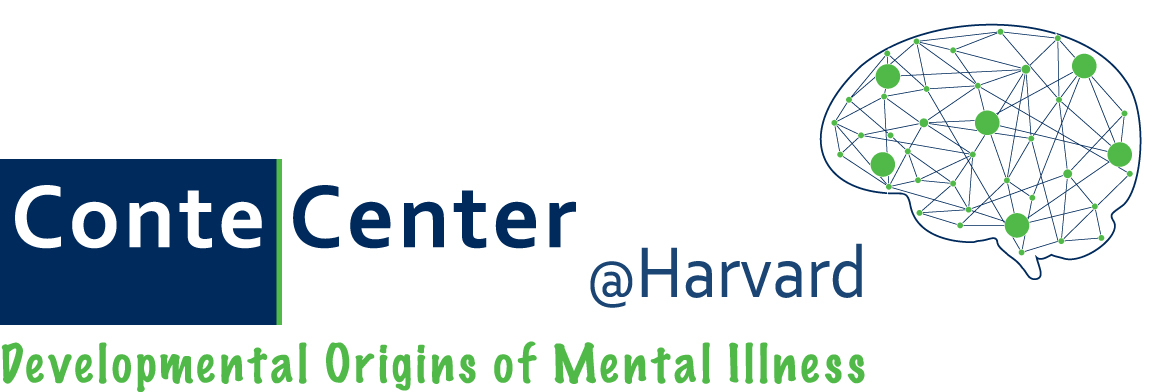Human Brain Organoids
Human Brain Organoid (credit Giorgia Quadrato, Arlotta Lab)
Modern genomic sequencing technologies have allowed the field to identify important genetic polymorphisms associated with neurodevelopmental and neuropsychiatric disorders such as schizophrenia (SCZ) and autism spectrum disorder (ASD). However, we still have a limited understanding of the cellular- and circuit-level defects associated with genetic mutation and variation in these pathologies. It is also unclear whether distinct mutations may lead to common structural, cellular and functional abnormalities. Finding answers to these key questions is made difficult by the complexity of the diseases (which affect multiple cell types in distinct brain regions), the lack of single, ideal experimental models for these overtly “human” pathologies, and the need to investigate phenotypic abnormalities in many genetic backgrounds.
Prior work provides evidence that mouse models can be successfully used to study specific aspects of disease pathology and has identified key cell types involved (e.g. parvalbumin-positive interneurons [PV-INs]). However, rodent models have important limitations due to the inherent differences in the development, architecture and function of their brain compared to humans. It is not known to what extent abnormalities observed in rodents in response to human mutations replicate those in the human brain. It is increasingly clear that work in rodents must be integrated with the use of primate models, including models of the human brain.
Studies using human brain tissue are of course complicated by practical and ethical concerns of tissue availability, expansion and manipulation. However, recent progress has enabled the development of cellular models of the human developing brain via the generation of 3D brain organoids, which we propose can complement rodent and non-human primate (NHP) systems to model basic aspects of human brain development and pathology. Although reductionist in nature, 3D brain organoids are amenable to high-throughput genetic engineering, making them advantageous platforms for investigating a spectrum of genetic mutations. These models can provide a valuable platform to link mutations in disease-associated genes with specific abnormalities in human neurons and circuits, as well as help identify molecular targets.
Our lab will contribute to the collective goals of this consortium in two ways. We will use a protocol that we recently established1 to generate and characterize 3D human brain organoids engineered to carry the same ASD-linked mutations in the SHANK3 and MECP2 genes investigated by the other members of the consortium in rodent and NHP (marmoset) models. In addition, we will optimize our recently developed Method for Analyzing RNA following Intracellular Sorting (MARIS2,3) to purify and molecularly profile specific subclasses of cortical neurons from rodent and NHP brain and human 3D brain organoids.
Recent Publications
Multiscale 3D phenotyping of human cerebral organoids.
Albanese A., et al., 2020
Sci Rep. 8;10(1):21487. Pubmed
FIN-Seq: transcriptional profiling of specific cell types from frozen archived tissue of the human central nervous system.
Amamoto R., et al., 2020
Nucleic Acids Res. 48 (1):e4. Pubmed
Individual brain organoids reproducibly form cell diversity of the human cerebral cortex.
Velasco S., et al., 2019
Nature. 570 (7762) pp. 523-527. Pubmed
Individual Oligodendrocytes Show Bias for Inhibitory Axons in the Neocortex.
Zonouzi M., et al., 2019
Cell Rep. 27 (10) pp. 2799-2808.e3. Pubmed
Cell diversity in the human cerebral cortex: from the embryo to brain organoids.
Arlotta P, Paşca SP. 2019
Curr Opin Neurobiol. 56 pp. 194-198. Pubmed
Voltage imaging and optogenetics reveal behaviour-dependent changes in hippocampal dynamics.
Adam Y., et al., 2019
Nature. 569 (7756) pp. 413-417. Pubmed
Studying the Brain in a Dish: 3D Cell Culture Models of Human Brain Development and Disease.
Brown J, Quadrato G, Arlotta P. 2018
Curr Top Dev Biol. 129 pp. 99-122. Pubmed
Combining NGN2 Programming with Developmental Patterning Generates Human Excitatory Neurons with NMDAR-Mediated Synaptic Transmission.
Nehme R., et al., 2018
Cell Rep. 23 (8) pp. 2509-2523. Pubmed
The ethics of experimenting with human brain tissue.
Farahany NA., et al., 2018
Nature. 556 (7702) pp. 429-432. Pubmed
Organoids required! A new path to understanding human brain development and disease.
Arlotta P., 2018.
Nat Methods. 15 (1), pp. 27-29. Pubmed
Editorial overview: Developmental neuroscience 2017.
Arlotta, P. & Vanderhaeghen
Curr Opin Neurobiol, 42, pp. A1-A4. Pubmed
Cell diversity and network dynamics in photosensitive human brain organoids.
Quadrato, G., et al., 2017.
Nature, 545 (7652), pp. 48-53 Pubmed
Changes in the Excitability of Neocortical Neurons in a Mouse Model of Amyotrophic Lateral Sclerosis Are Not Specific to Corticospinal Neurons and Are Modulated by Advancing Disease.
Kim, J., et al., 2017.
J Neurosci, 37 (37), pp. 9037-9053 Pubmed
Present and future of modeling human brain development in 3D organoids.
Quadrato, G. & Arlotta, P., 2017.
Curr Opin Cell Biol, 49, pp. 47-52 Pubmed
Seq-ing the cortex one neuron at a time.
Chen, H.-H. & Arlotta, P., 2016.
Nat Neurosci, 19 (2), pp. 179-81. Pubmed
Stressed out? Healing Tips for Newly Reprogrammed Neurons.
Quadrato, G., Zhang, A.C. & Arlotta, P., 2016.
Cell Stem Cell, 18 (3), pp. 297-9. Pubmed
The promises and challenges of human brain organoids as models of neuropsychiatric disease.
Quadrato, G., Brown, J. & Arlotta, P., 2016.
Nat Med, 22 (11), pp. 1220-1228. Pubmed
Seven actionable strategies for advancing women in science, engineering, and medicine.
Smith, K.A., et al., 2015.
Cell Stem Cell, 16 (3), pp. 221-4. Pubmed
Homeotic Transformations of Neuronal Cell Identities.
Arlotta, P. & Hobert, O., 2015.
Trends Neurosci, 38 (12), pp. 751-62 Pubmed
Instructing Perisomatic Inhibition by Direct Lineage Reprogramming of Neocortical Projection Neurons.
Ye, Z., et al., 2015.
Neuron, 88 (3), pp. 475-83 Pubmed
DeCoN: genome-wide analysis of in vivo transcriptional dynamics during pyramidal neuron fate selection in neocortex.
Molyneaux, B.J., et al., 2015.
Neuron, 85 (2), pp. 275-288. Pubmed
Distinct profiles of myelin distribution along single axons of pyramidal neurons in the neocortex.
Tomassy, G.S., et al., 2014.
Science, 344 (6181), pp. 319-24. Pubmed
Gene co-regulation by Fezf2 selects neurotransmitter identity and connectivity of corticospinal neurons.
Lodato, S., et al., 2014.
Nat Neurosci, 17 (8), pp. 1046-54 Pubmed

